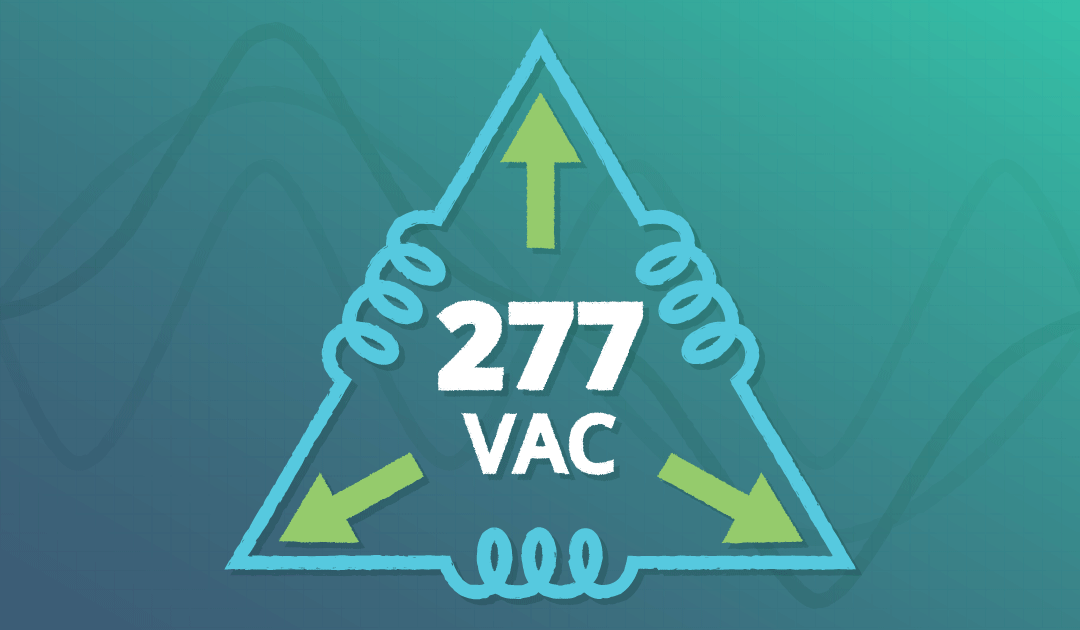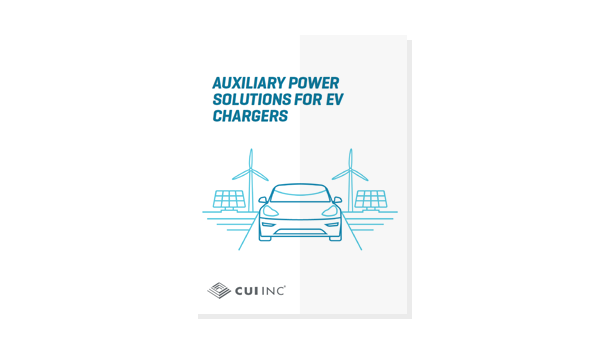EV充電ステーション用補助電源を選択する
2023年4月18日、Ron Stull著 - 5分の閲読
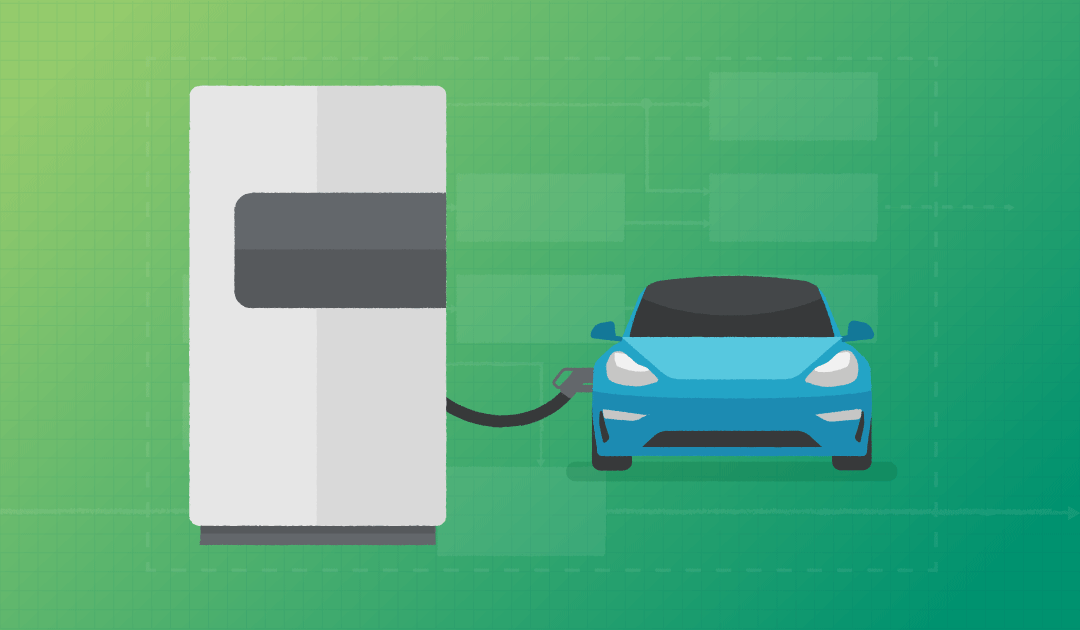
More EVs Means More Charging Stations
EV adoption has been steadily increasing as range anxiety has been met with the widespread deployment of charging stations. There is now a range of EVs to choose from, each with their own target applications (commuting, public transportation, long haul trucking, etc.), battery capacities, and on-board charger (OBC) power. This in turn has led to a range of charging station types and levels. Charging stations for consumer vehicles are now classified as levels 1 through 3, where levels 1 and 2 are for slow and quick ac charging, while level 3 is for dc fast charging. Each level is intended to support different driving behaviors, so that together they efficiently support all charging needs.
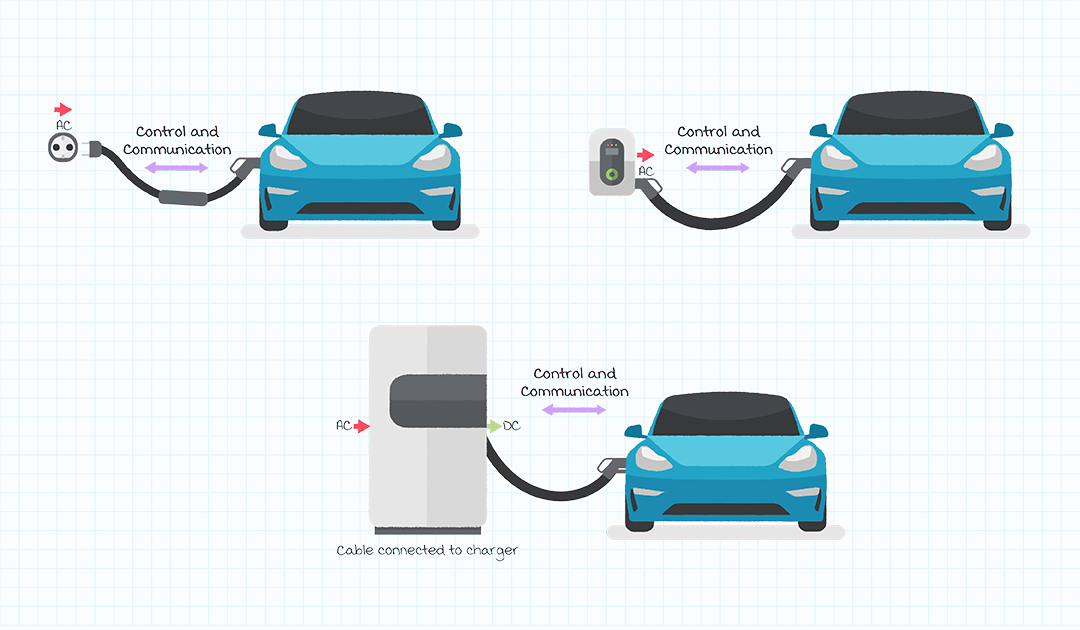
Charging Stations Need Power Too
One thing that chargers of all levels have in common is their need for auxiliary power. While the power to charge the EV battery is provided by either an on or off board charger that converts the ac grid voltage to the high voltage dc power for the battery, the electronics inside the charging station, also called electric vehicle service equipment (EVSE), require low voltage dc power. This is typically supplied by internal ac/dc power supplies within the EVSE. And, while often an afterthought compared to the charger itself, the selection of auxiliary power supply is no less impactful to the performance and reliability of the charging station. When selecting an aux power supply for EVSE, there are several items to keep in mind to achieve an optimal design. These include the input voltage range, surge resilience, operating temperature range, and EMI/EMC ratings of the power supply.
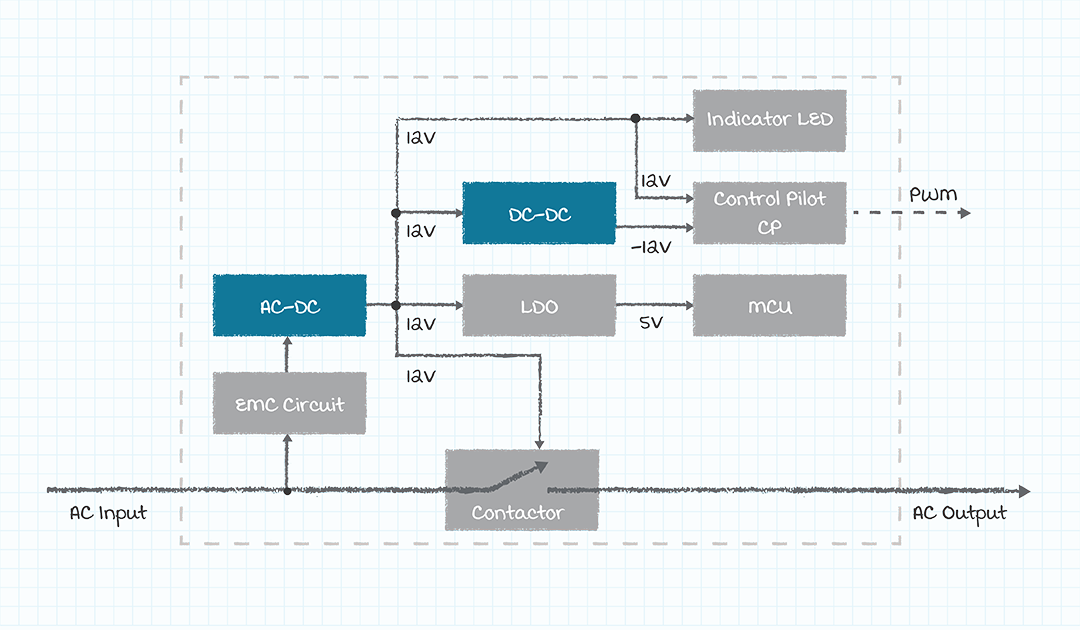
Surge Resilience
Power surges are an easy way to damage a power supply and the equipment they power. As an application gets closer to the power source, for example moving from a residential outlet to the distribution box, the more severe surges are likely to be. These different locations are divided into Over Voltage Classes with OVC Class I being the least severe and OVC Class IV being the most severe and located at the origin of the installation. Level 1 charging equipment is typically plugged into a residential outlet for which an OCV II rating will suffice. Level 2 chargers may also be powered from an OVC II source, but to achieve the maximum Level 2 charging power a fixed installation is typically needed. These installations require a power supply rated for OVC III. Power supplies rated to OVC III have increased surge resilience to deal with the increased surge potential.
ワイド入力電圧範囲
It is common for modern switch mode power supplies to have a so-called universal input range, which typically means a range of 90~264 Vac (100 Vac to 240 Vac +/- 10%). This covers the majority of residential voltages around the world including both 120 and 240 Vac in the United States. For Level 1 and 2 chargers found in the home and at business locations, this is an acceptable range. However, Level 3 dc fast chargers are often supplied by industrial sources with line-to-line voltages of 480 Vac. In these cases, the line to neutral voltage that an auxiliary power supply operates from is 277 Vac, which is outside the range of a typical power supply. In these cases, a power supply that is designed for use in 480 Vac systems should be selected. A power supply rated for 277 Vac operation will be specified up to 305 Vac to provide 10% headroom for voltage fluctuations.
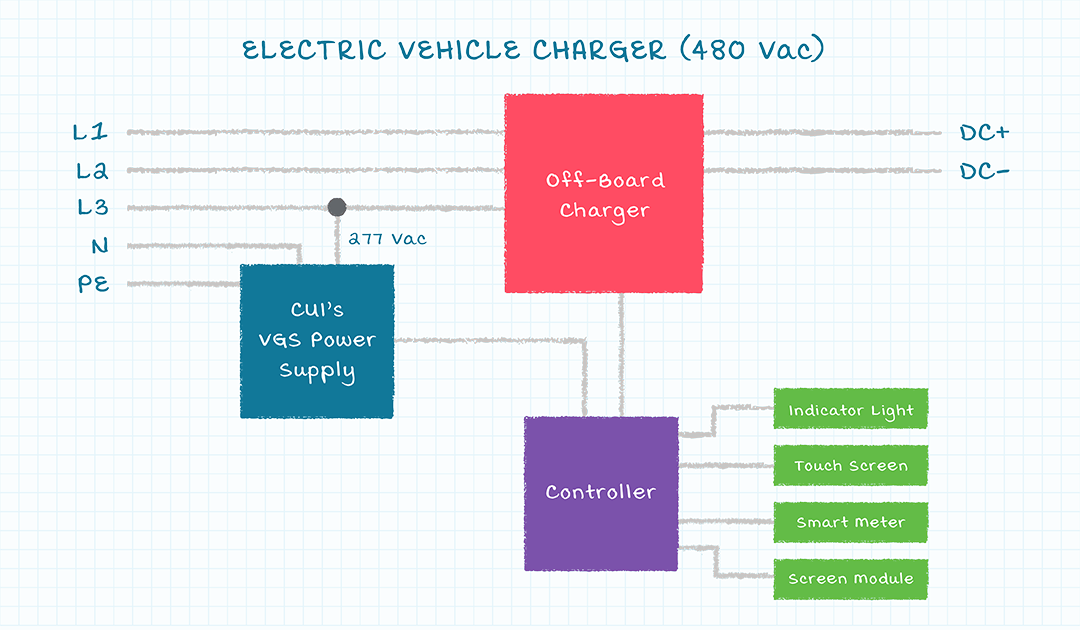
Operating Temperature Range and Protection
EV charging stations are installed in a variety of locations, from garages to parking lots, and many of these locations tend to have no control over the thermal conditions they operate in. The internal power supplies therefore need to have a wide operating temperature range to ensure reliable operation in both hot and cold conditions. External temperatures can easily exceed 40°C in summer months and can drop below -20°C in the winter. Both cases can cause many problems for power supplies including failed start-up, increased voltage ripple, or even component failure. A power supply with a wide operating temperature range (-40°C ~ 85°C) helps ensure that the charging station works in all seasons.
Even with a wide temperature range, there may be so-called once in 100-year events that exceed all expectations. CUI Inc, for example, in Portland Oregon, saw ambient temperatures in excess of 47°C for a week in 2021 (over 25°C greater than average). To protect against these outlier conditions, over temperature protection is a valuable feature that can protect the power supply and its load from failure when the maximum operating temperature is exceeded. Over temperature protections tend to automatically recover, meaning they will resume operation when the temperature falls back below the protection threshold, usually with some hysteresis.
EMI/EMC
Electromagnetic compliance (EMC) is necessary to ensure that charging stations don’t interfere with or get affected by other electronic equipment in the area. EMC is typically classified as Class B for residential environments, or Class A for most others. Class B is the more stringent of the two and tends to require larger filter components, which leads to a larger power supply form factor. Class A power supplies may be smaller in size but are also more limited in where they may be used. Additionally, some power supplies are designed without the EMC circuit all together and depend on the user to design and apply the appropriate filtering. This can lead to the most compact designs but requires a little more work by the user. Often reference circuits will be supplied by the vendor to help the user meet the desired level of EMC performance with minimal effort.
EVSE Power Supply Solutions
There are a wide range of power supplies that may be suitable for use in an EV charging station. Power supplies must be reliable under a range of conditions, many of which exceed the more typical specifications. These include input voltage range, surge resilience, operating temperature, and EMI/EMC. The selection of power supply is heavily influenced by these conditions, installation location and power level. Understanding these relationships and the power supply options available can lead to more optimal and reliable designs. CUI Inc and its team of power supply experts can help you navigate the available power supply options and guide you towards the best solution for your application.
こちらもご覧ください
この記事またはトピックに関するコメントを今後当社が取り上げるべきだと思いますか?
powerblog@cui.comにメールでご連絡ください。
